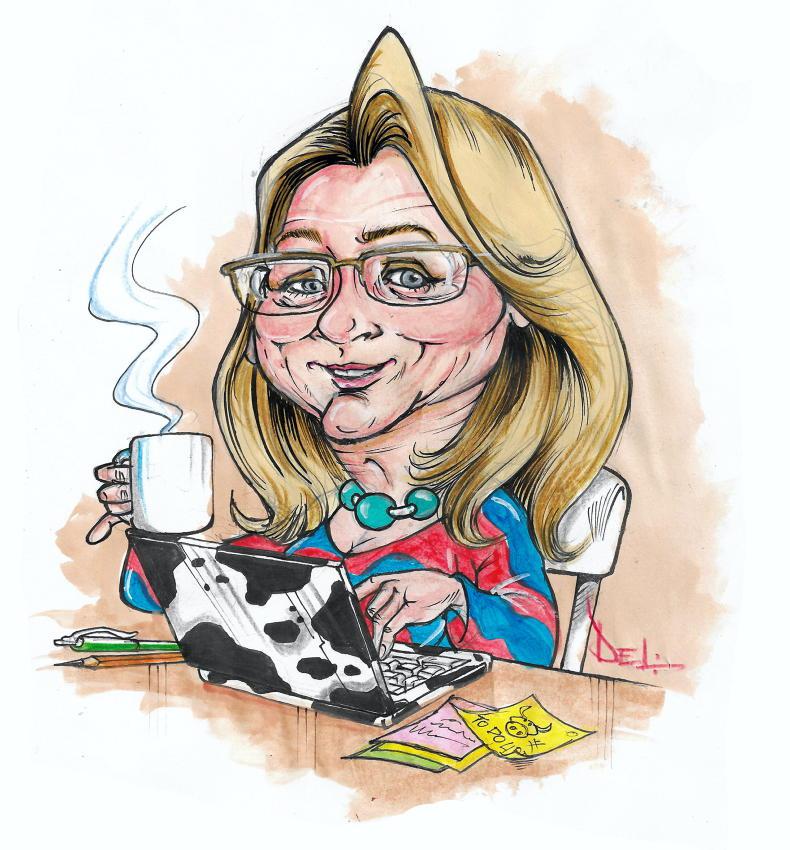Tim was in the jeep and I was walking towards the yard to feed the calves. He stopped to chat. A few minutes brought us both up to date on the day’s events. It is so important to keep up to speed on the activities on the farm.
Even if you are not involved with the farm work or only part of it as I am, talking about it increases your knowledge and provides support in stressful times. For example, if you know there is a heavy day ahead on the farm then it’s probably not the day to ask for a garden favour. Knowledge is power and there is a right time for everything. As we chatted, a house martin passed across the front of the jeep almost close enough to say “Hello, I’m back!” It’s a great feeling when we see the swallows return. We had three in the garage last year and they brought out two clutches. Tim met three again out the field. It looks like we have a threesome again.
Calving has finished and has brought its own messages. We’re scratching our heads and wondering why we actually bred a few late cows. They have lost two months of milk production and will be playing catch-up for the rest of their lives. The calves are also a nuisance to feed after a busy season. They interrupt the progression of baby calves going from fresh milk to replacer to once-a-day feeding and on to weaning and grass. You end up doing a bit of everything and they drag out the calving season. Still it’s a good time to focus the mind on keeping calving compact and there is knock-on efficiency for the calf-rearing enterprise.
Breeding time
So, breeding time is upon us. Regular artificial insemination started with the cows last Monday. It started with the 70 heifers that are with Billy O’Shea, the heifer rearer, in Kildare the week before using fixed time AI. This means they received a hormone treatment protocol over a number of days. It is time sensitive and the heifers were inseminated in the same rota as they had been injected. An AI technician was on hand and Tim and Colm went up to load the AI guns for him while Billy directed operations. It takes planning and organisation but it will result in a 70% conception rate.
The lead into breeding is really important, identifying cows that are not cycling and marking them for treatment and so on. Using the data collected from the Sense Hub collars, the cows that were not cycling and had calved 30 days were also hormone-treated for fixed-time AI. The conception rate will be low in this group but the real goal is to get them cycling and it usually results in getting the cows back on track for breeding.
Sexed semen is being used for all dairy replacements and the aim is to have them all born in the first three weeks of calving. This gives the cows a great start to their lactations. It also gets the milk sales going quickly and that welcome milk cheque returning. The calves hit the ground running and are ahead for the rest of their lives. They form a strong bunch, grow well and while the workload is heavy for those three weeks, it is well worth the effort. The challenge is to have enough grass to feed the cows without having to feed silage.
Reseeding
It is also the time of year to get reseeding done. We aim to do about 10% of the grass platform every year. Grass quality is hugely important. So the paddocks have been sprayed off with round-up and will be disced. There will be no ploughing. They will be reseeded with a mixture of ryegrass, white clover and red clover. Ricky is all excited because Daddy will be coming with the grass seed today and uncle Niall will be spreading lime at a rate of 2t/acre. The little boy is glued to the window and listening intently for the roll of the truck and tractor and spreader. Business starts at a very young age. It must be nurtured. If the breeding season goes as well as calving, we’ll be doing all right.






 This is a subscriber-only article
This is a subscriber-only article











SHARING OPTIONS: